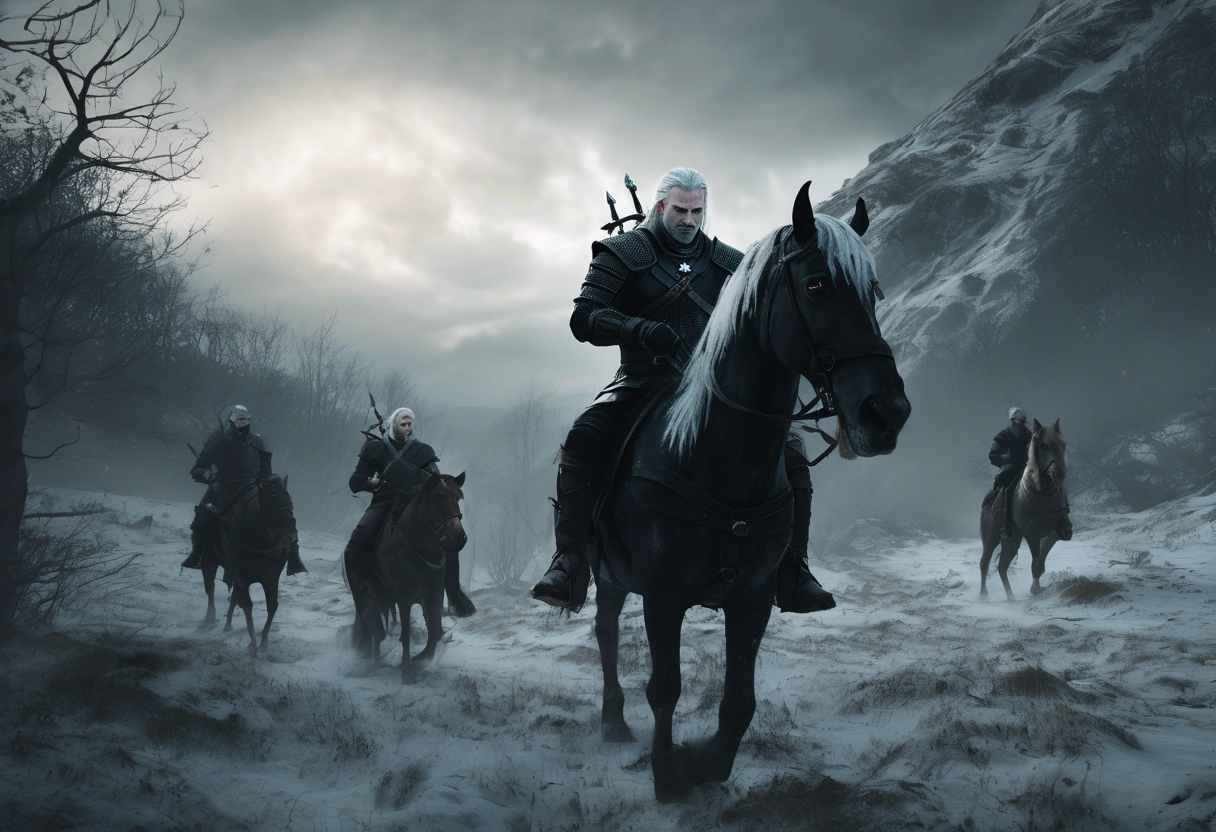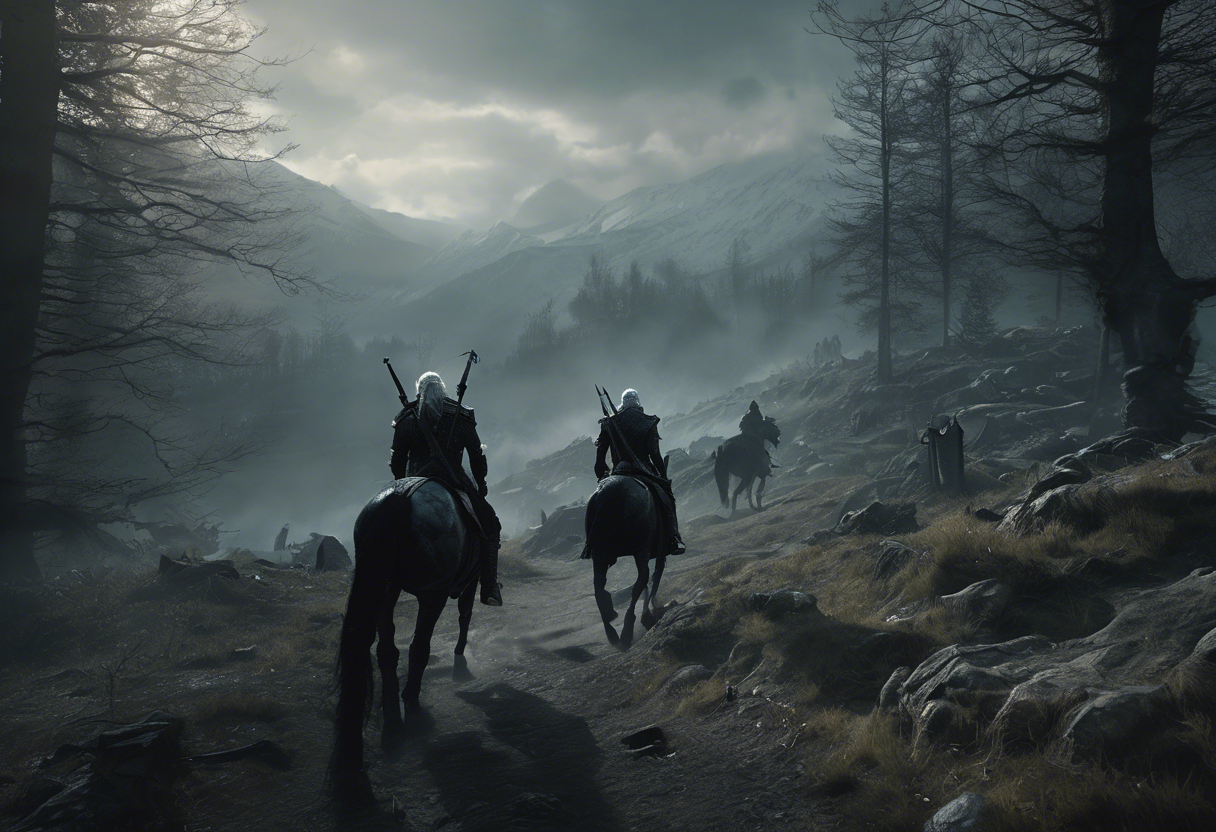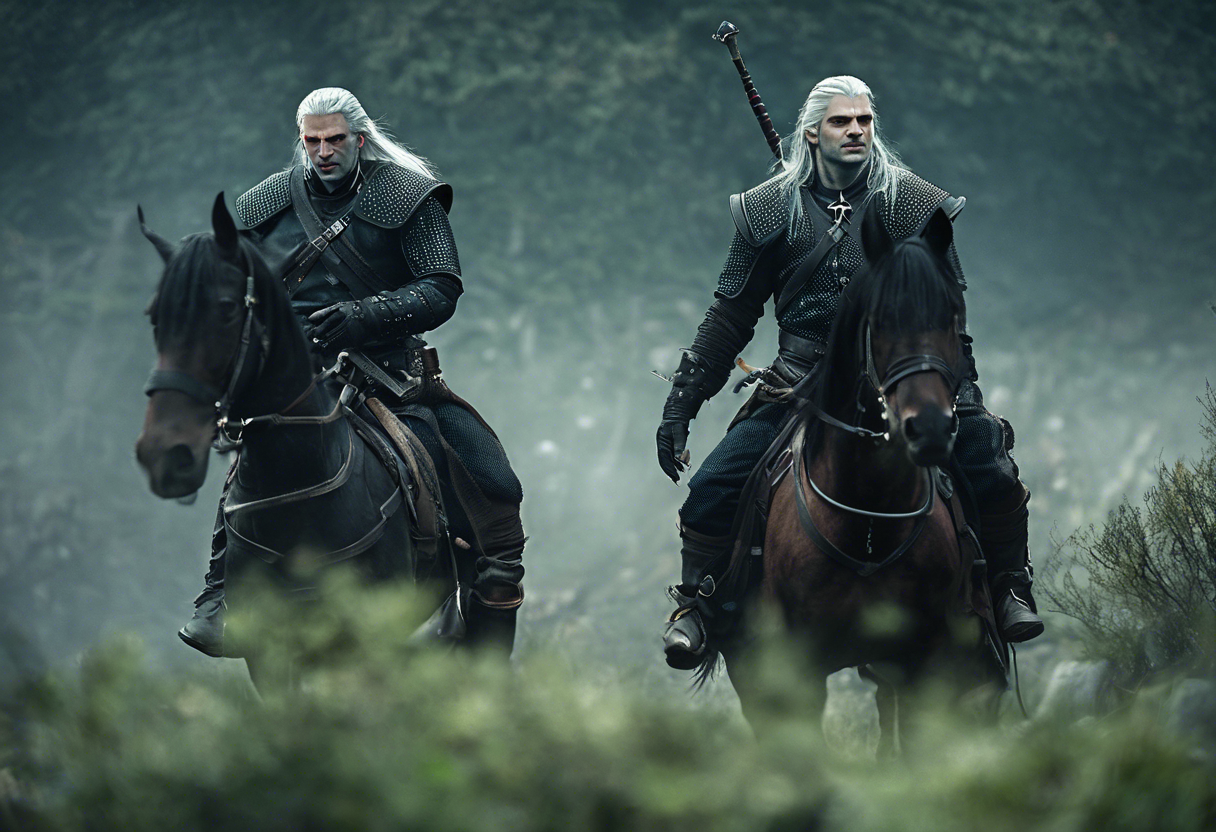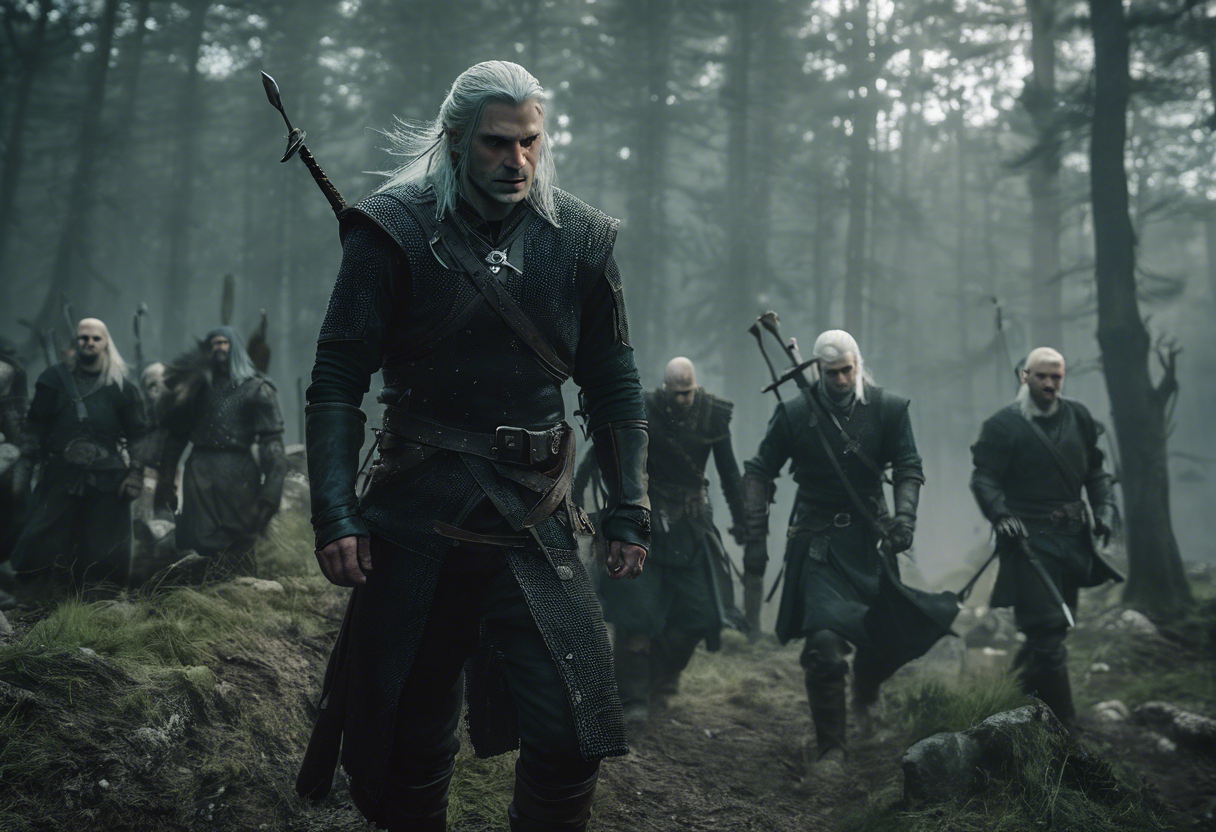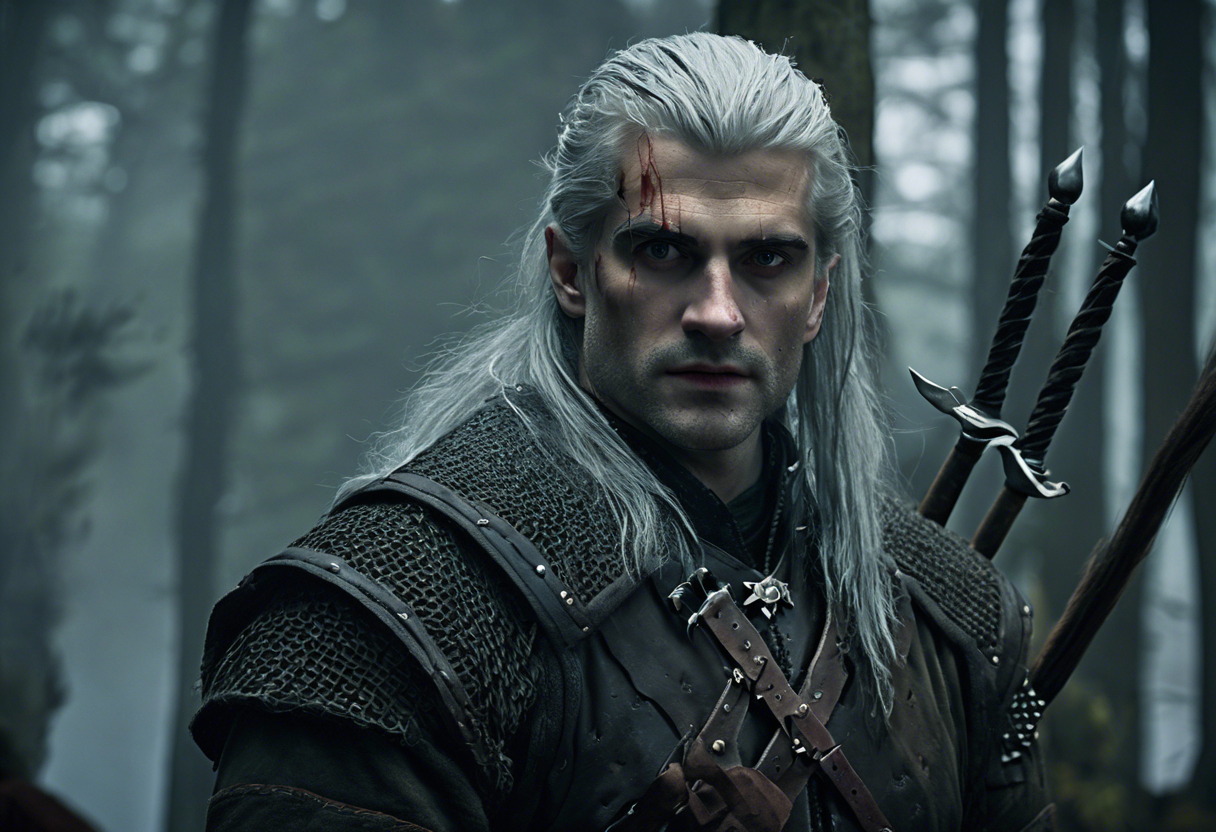Contents
Introduction
Background and Production History
The second season of the Netflix series "The Witcher," often referred to in the context of its overarching narrative as "The Wild Hunt," builds upon the foundation established in the first season. The series, based on the popular book series by Andrzej Sapkowski, was renewed for a second season on November 13, 2019, with production beginning in early 2020 in London. Despite delays due to the COVID-19 pandemic, the season premiered on December 17, 2021[3].
Key creative figures behind the second season include showrunner Lauren Schmidt Hissrich, who emphasized the adaptation’s faithfulness to Sapkowski’s novels while introducing structural changes to suit television storytelling. Directors such as Alik Sakharov and Charlotte Brändström also played crucial roles in bringing the narrative to life[3].
What Sets it Apart
"The Witcher" Season 2 stands out within its genre for its complex characters, intricate world-building, and the blending of fantasy and medieval elements. The series delves deep into the lore of the Continent, a fictional, medieval-inspired landmass, and explores themes of identity, power, and the consequences of one’s actions. This season, in particular, is notable for its non-linear storytelling and the introduction of new characters and plot twists that enrich the narrative[3].
Plot Summary
Aftermath of the Battle of Sodden
The second season of "The Witcher" begins with the aftermath of the Battle of Sodden. Geralt of Rivia, the brooding monster hunter, takes Princess Ciri to Kaer Morhen, the stronghold of the Witchers, where they reunite with other Witchers. Meanwhile, Yennefer of Vengerberg escapes and returns to Aretuza, only to find herself stripped of her magical powers [1][2].
Training and Revelations
At Kaer Morhen, Ciri begins her training with Geralt, during which she discovers her latent magical abilities. This revelation is linked to the mysterious connection between monsters and monoliths, a central plot point in the season. Yennefer and Cahir, who had escaped together, uncover a smuggling operation involving elves orchestrated by the bard Jaskier. Geralt and Istredd’s investigation into the fallen monoliths leads them to confront a menacing flying monster [1][2].
Convergence and Conflict
The paths of Geralt, Ciri, and Yennefer intersect at the Temple of Melitele, where Yennefer teaches Ciri how to summon portals, enabling their escape. However, Ciri’s plans to attack the Nilfgaardians are complicated by her possession by the Deathless Mother, Voleth Meir. The Wild Hunt appears, and Ciri teleports them to Kaer Morhen, leading to a climactic confrontation. Vesemir suggests sacrificing Ciri to kill Voleth Meir, but Geralt refuses, leading to a battle where the Witchers choose their love for Ciri over the chaos that strengthens Voleth Meir. Ultimately, Yennefer offers herself as a vessel for Voleth Meir, and Ciri uses a monolith to open a portal, allowing them to escape [1][2].
Themes and Symbolism
Identity and Belonging
One of the central themes of Season 2 is the exploration of identity and belonging. Ciri’s journey is a metaphor for finding one’s place in the world, as she navigates her royal heritage, her magical abilities, and her connection to the Witchers. Geralt’s protective instincts and Yennefer’s sacrifices highlight the complexities of family and belonging in a world fraught with danger and uncertainty.
Power and Corruption
The season delves into the themes of power and corruption, particularly through the characters of Yennefer and Ciri. Yennefer’s loss of powers and her subsequent actions illustrate the consequences of relying on power and the importance of human connections. Ciri’s possession by Voleth Meir serves as a cautionary tale about the dangers of unchecked power and the importance of self-control.
Love and Sacrifice
Love and sacrifice are recurring themes, evident in the relationships between Geralt, Ciri, and Yennefer. The Witchers’ decision to prioritize their love for Ciri over their duty to eliminate Voleth Meir underscores the power of emotional bonds in a world dominated by violence and magic.
Cultural Impact
Reception and Influence
Upon its release, "The Witcher" Season 2 received significant attention and acclaim. The series has influenced popular culture, with its characters, costumes, and settings becoming subjects of fan art, cosplay, and discussions. The show’s success has also led to the expansion of the franchise, including the animated film "Nightmare of the Wolf" and the live-action prequel miniseries "Blood Origin"[3].
Adaptations and References
The series has been referenced in various forms of media, from video games to other TV shows. The character of Geralt of Rivia, in particular, has become an iconic figure in modern fantasy, influencing character designs and storylines in other works. The show’s unique blend of fantasy and medieval elements has set a new standard for fantasy adaptations.
Critical Reception
Initial Response
At the time of its release, "The Witcher" Season 2 received generally positive reviews from critics and audiences. Praise was directed towards the improved pacing, character development, and the deepening of the narrative. However, some critics noted inconsistencies in the storytelling and the handling of certain characters[5].
Controversies and Interpretations
There were some controversies surrounding the season, particularly regarding the portrayal of certain characters and the deviations from the source material. Some fans felt that the show did not stay true to Sapkowski’s novels, while others appreciated the creative liberties taken to enhance the story for the screen.
Long-term Impact
In subsequent years, the season has been reevaluated, with many praising its complexity and the way it sets up the narrative for future seasons. The show’s ability to balance action, drama, and fantasy elements has been lauded, and it continues to be a benchmark for fantasy TV series.
Legacy
Enduring Relevance
"The Witcher" Season 2 continues to inspire filmmakers, artists, and audiences alike. Its influence can be seen in the growing interest in fantasy adaptations and the increased focus on complex, character-driven storytelling in TV series. The show’s use of non-linear storytelling and its exploration of deep themes have made it a staple in modern fantasy television.
Place in Cinematic History
The season’s contribution to the broader narrative of "The Witcher" franchise solidifies its place in cinematic history. As one of the most successful fantasy adaptations in recent years, it has paved the way for future adaptations and has set a high standard for storytelling in the genre.
References
- https://economictimes.com/news/international/us/the-witcher-season-2-recap-know-what-happened-before-you-stream-season-3/articleshow/101226172.cms
- https://collider.com/the-witcher-season-2-recap/
- https://en.wikipedia.org/wiki/The_Witcher_(TV_series)
- https://www.youtube.com/watch?v=gpb4YET8Ddg
- https://winteriscoming.net/2021/12/19/the-witcher-season-2-episodes-review/


